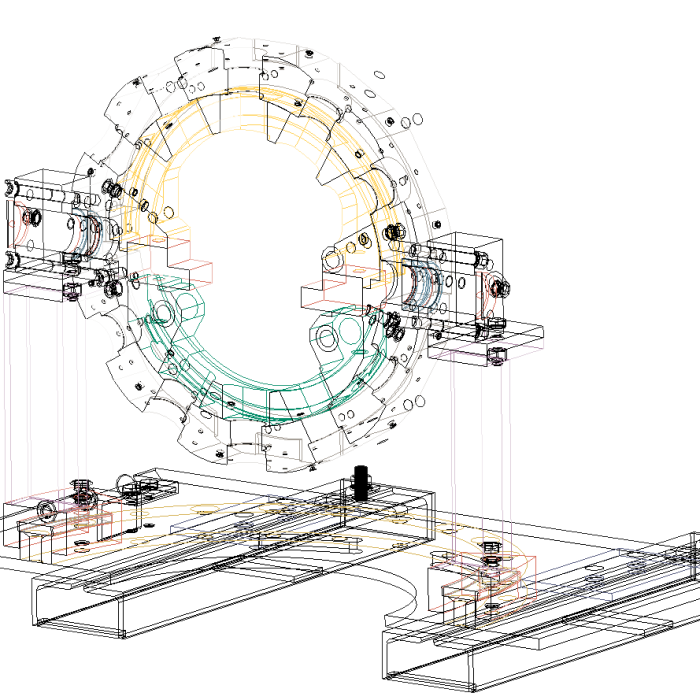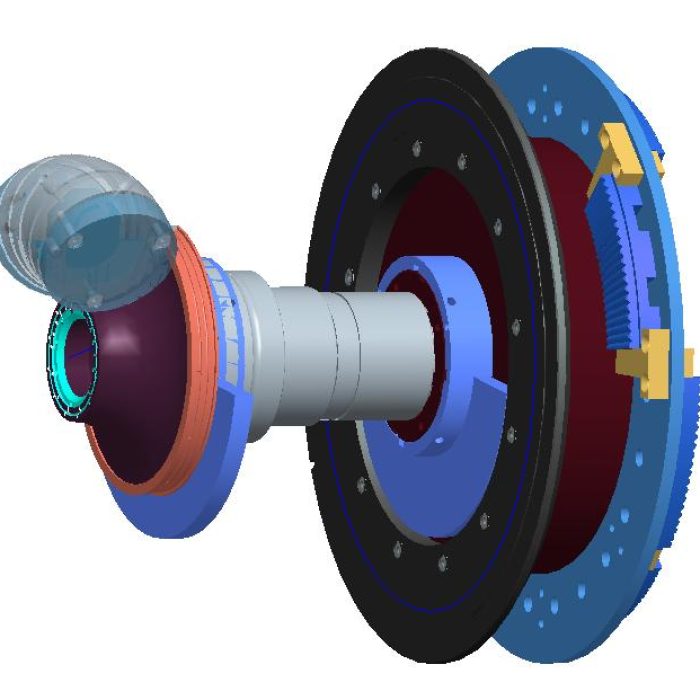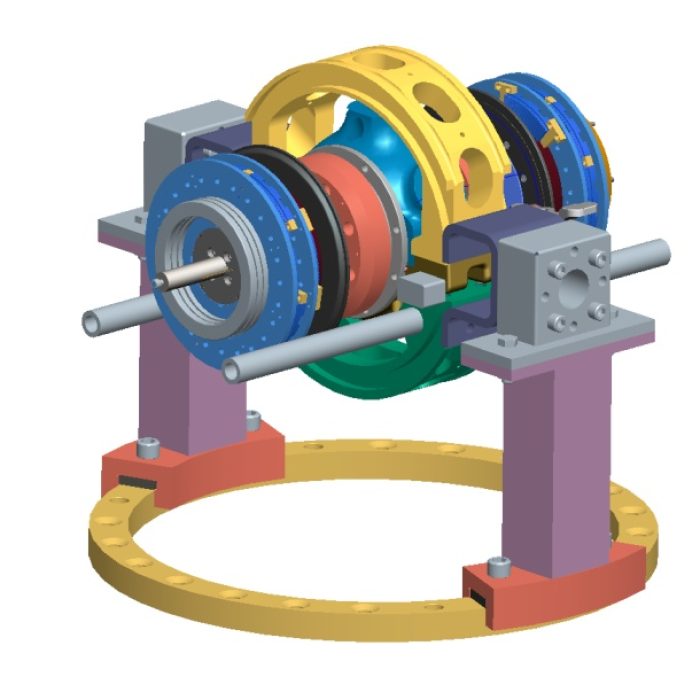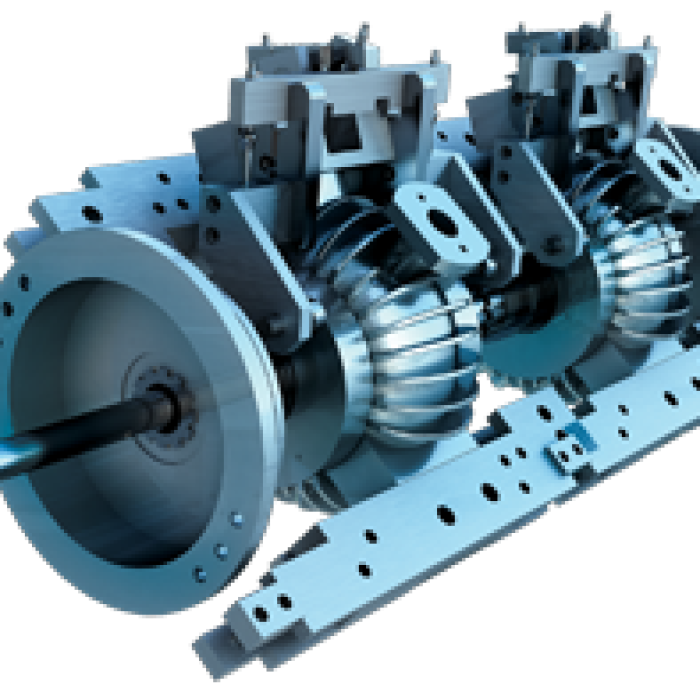VC-Roto Engine Innovation
– Tech Development
Redefining the landscape
Inventing is about imagination and thought experimenting with newer concepts using scientific means. After ideation it needs to be realized by incubating it through various processes. This process of machine design is all about application of engineering principles for designing of a system based on RVCR principle. It was a formidable challenge. It can be comprehended by the fact that, (today within the industry with established and fully operational design centers), a serious engine or turbine innovation projects (like say VCR or VVT technology) takes about a decade to complete. The entire process of technology development owing to its arduousness and its immense value is termed as high value design. It’s highly cost and time intensive and requires super specialized industrial facilities. It is a very niche field of extreme engineering excellence.
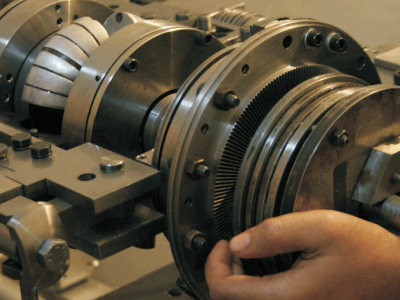

The Approach
As RVCR project was an entirely new blue-sky endeavor. A ‘Top Down’ approach for the project was not an option. The Bottom-up approach is about starting from scratch, one activity at a time. This is like entering a black hole, where you don’t know what’s to happen next and how it will end-up. But this is something an inventor and engineer can do and the RVCR project got initiated. An ‘On the go as we Go’ approach was adopted with project activities, so that in time we shall reach the point where sufficient knowledge is acquired and ‘Top-Down’ approach can be applied. This was a very long road.

The RVCR innovation drive
It took years to formulate and firm-up the mathematical model that makes the base of the technological knowhow. But engineering was just one part. Innovation is much more than engineering. Engineering happens to be an essential part, but it’s only one of the numerous other aspects that includes multiple facets like commercial, legal, statutory, marketing, finance, JV management, innovation management, the investor ecosystem, governmental regulations etc. The commercialization of technology involves knowing the industry business dynamics.
It takes much more than engineering and scientific mindset to take a technological project to its logical conclusion.
Proto - VC-Roto Engine Design & Development
We live in an era where almost anything can be modeled on a computer, even a virtual human partner. We know of virtual reality like the one in the movie ‘The Matrix’, or ‘Virtuosity’. Programmers can model interactive games showing entire cities and courses for bike and car races. So, we can model a machine on a computer based on logical mathematical construction of a new concept.
To model a machine, one needs to 1st know the geometry (the form, shape, size, and dimensions). The RVCR Concept was not an abstract idea, rather it used newer means to achieve known thermodynamic gas processes. The concept though conceived and illustrated using basic geometric shapes, it had to be shaped into feasible geometry. Like rectangular flat surfaces of a flap, in the concept drawings are given rounded features and circular cylindrical shapes. These shapes are further accessed for feasibility of fitting together in an assembly. The assembling process too needs to be feasible. This is followed by a feasibility check for manufacture. The comes in the integrity to perform the intended function. This whole process involves thought experimentation with engineering principles.
Once done the 1st ever RVCR core assembly emerges. The assembly is then put through successive failure mode analysis and if any feasibility issues exist, the entire assembly is reworked. Finally after a number of corrective iterations the 1st virtual assembly or the CAD model is arrived at.
Manufacturing is one of the 3 pillars of mechanical engineering along with ‘Machine Design’ and ‘Thermodynamics’.
Having the 1st Computer Aided Design (CAD) model is the 1st step. It makes it easy to explore manufacturing feasibility. The CAD software is then used to output the manufacturing drawings (Drafting). The manufacturing process is deliberated, and corrections made to the model for any issues. The manufacturing plan is then formalized (like say should it begin with mold making for casting and its treatment before machining, followed by machining (Rough and final) till each component is finally made). Each component poses its own challenges in terms of quality and correctness. This shapes up the inspection plan. The tagging and handling of each component with its specific details follows. Though the manufacturing is covered in a few lines here, it is highly time and cost intensive and extends into months. It involves numerous key engineering branches of high specialization. This lays the foundations for formulating the pilot and actual product.
Each of our RVCR manufactured components has gone through numerous iterations and has been assessed for viability (mass manufacturability). Owing to the simpler manufacturing the capex cost of RVCR is evaluated to be lower than its equivalent conventional products.
The precursor to a product is a pilot product assembly. The assembly comprises sub-assemblies, and these subassemblies are further assemblage its own ‘sub-assemblies’. It is a pyramid of layers of subassemblies built over the base layer comprised of individual components. The putting together of individual components at time face hinderances while assembling and require ‘mating’ process. Once mated the components are held into a number of smaller subassemblies. These are then mated into higher subassemblies till we reach the final assembly. The sub-assemblies at each stage undergo testing for correctness. The RVCR prototype assembly is successfully tested for its kinematic integrity.
VC-Roto Engine assembly was put to various tests for the functionality, durability, and verification of its design intent. The inconsistencies with the intended performance are analyzed and root causes are determined. Hereafter the assessment of the results is carried out for verification for accuracies of the results with those results generated from computer based virtual simulation of the tests. The discrepancies are then processed in design correction cycle and iterated till desired results are achieved. Having achieved satisfactory results, the RVCR assembly was put to the next set of activities of the proto development process.
The integration is about the compatibility of systems into a desired configuration. Say getting the right kind of turbocharger for the engine. Having the correct fuel delivery system. The integrated assembly is put to testing of its functioning and some performances. RVCR proto development process is then pushed into further downstream stages (Trials, compliance to Suiting into other systems, Desing standardization, mass manufacturability, homologation, approvals, and certification etc.) On completion of these processes the project is now ready for Pilot product development for commercialization.
Contact Us
Phone Number
+91 74030 08844
Email Account
info@gyatk.com
Location
GYATK RVCR Apparatus Pvt Ltd, India,
KGYAT Wind Power Ltd, United Kingdom

